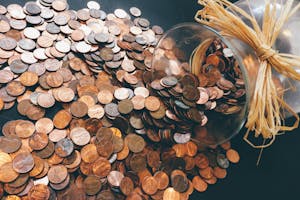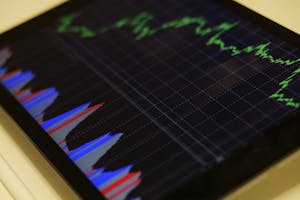In an unpredictable world, one financial cushion stands out as essential for navigating life's uncertainties: emergency savings. While most people acknowledge the need for savings, understanding the true power of an emergency fund is often overlooked. This post delves into the importance of emergency savings, how to build one, and why it should be a non-negotiable part of your financial plan.
Table of Contents
- What Is Emergency Savings?
- Why You Need an Emergency Fund
- How Much Should You Save?
- Where to Keep Your Emergency Fund
- Tips for Building Your Emergency Fund
- How to Handle Withdrawals
- The Psychological Benefits of an Emergency Fund
- Common Myths About Emergency Savings
- Conclusion
- Your Thoughts
1. What Is Emergency Savings?
Emergency savings, commonly referred to as an emergency fund, is a stash of money set aside specifically for unexpected financial emergencies. Emergencies can come in many forms, such as medical expenses, car repairs, job loss, or home-related issues like appliance breakdowns. This fund acts as a financial buffer, allowing you to handle unplanned expenses without diving into debt.
Many financial experts recommend having at least three to six months’ worth of living expenses saved in an easily accessible account. This savings goal may seem daunting, but breaking it down into manageable steps can make it achievable.
2. Why You Need an Emergency Fund
The reasons for building an emergency fund are plentiful:
Financial Security
Having an emergency fund provides a sense of security. Knowing you have money to fall back on during tough times reduces anxiety related to financial instability.
Avoiding Debt
An emergency savings account helps you avoid reliance on credit cards or loans when faced with unexpected expenses. This practice not only protects your credit score but also shields you from accumulating debt that can spiral out of control.
Peace of Mind
A solid emergency fund gives you the confidence to make life choices without fear of financial consequences. Whether considering a job change, moving to a new city, or taking career risks, you can do so knowing you're financially prepared for the unexpected.
Improved Financial Habits
Building and maintaining an emergency fund instills discipline in your financial habits. It cultivates a mindset focused on savings, budgeting, and proactive financial planning.
3. How Much Should You Save?
Determining how much to save in your emergency fund depends on your individual circumstances. Common recommendations range from three months to six months’ worth of living expenses. Here’s how to gauge the amount that's right for you:
Assess Your Month-to-Month Expenses
First, calculate your essential monthly expenditures, including housing, utilities, groceries, insurance, and transportation. This amount represents your basic living costs.
Consider Job Security
If you work in a stable industry with ample job opportunities, you might lean toward a three-month safety net. Conversely, if you work in a volatile job market, consider six months or more.
Evaluate Health and Family Situations
If you have dependents or ongoing health issues, you may want to save an even larger cushion. Protecting your family’s well-being is paramount.
Start by setting a specific savings goal, and assess your comfort level with risks. It’s essential to find a balance between adequate savings and maintaining other savings goals, such as retirement or education funds.
4. Where to Keep Your Emergency Fund
When it comes to storing your emergency savings, consider the following options:
High-Yield Savings Accounts
High-yield savings accounts (HYSA) typically offer higher interest rates than standard savings accounts, allowing your emergency fund to grow without sacrificing easy access. Look for accounts with no monthly fees and no withdrawal limits.
Money Market Accounts
Money market accounts are another option that often provides a higher interest rate than traditional savings accounts while offering the flexibility to write checks or use a debit card for withdrawals.
Certificates of Deposit (CDs)
If you can afford to tie up your emergency savings for a short period, consider using CDs. However, since early withdrawal penalties may apply, it’s best to only invest a portion of your emergency fund in CDs.
Avoid Riskier Investments
While stock market investments may promise higher returns, they do not provide the stability needed for emergency funds. Stick to low-risk financial instruments to ensure your money is readily available when you need it.
5. Tips for Building Your Emergency Fund
Building an emergency fund doesn't happen overnight. Here are some practical tips to help you grow your savings:
Set a Savings Target
Define a clear savings target (i.e., three months' worth of expenses) and break it down into monthly savings goals. For example, if your target is $9,000, you might aim to save $750 per month for a year.
Automate Your Savings
Set up an automatic transfer from your checking account to your emergency savings account each payday. This "pay yourself first" strategy ensures you prioritize savings and reduce the temptation to spend.
Cut Unnecessary Expenses
Identify areas where you can trim costs. Consider packing lunch instead of eating out or canceling subscriptions you rarely use. Allocate these savings toward your emergency fund.
Use Windfalls Wisely
Whenever you receive unexpected money—such as a tax refund, bonus, or gift—consider funneling a portion directly into your emergency savings.
Celebrate Milestones
Track your progress and celebrate milestones along the way, whether it's reaching your first $1,000 or crossing off 25% of your savings target. Acknowledging your accomplishments can keep motivation high.
6. How to Handle Withdrawals
Emergencies are precisely when you can dip into your emergency fund, but knowing when to withdraw is crucial. Create a plan to ensure that you're using these funds wisely:
Define What Constitutes an Emergency
Establish clear criteria for what counts as an emergency. Examples may include medical bills, essential home repairs, or job loss. Avoid dipping into your fund for non-emergencies, like impulse purchases or vacations.
Replenish Your Fund
After using your emergency fund, prioritize replenishing it as soon as possible. Return to your savings plan and adjust your budget to make up for the withdrawal.
Consider an Emergency Fund for Emergencies
If you frequently face emergencies, it might be time to evaluate your circumstances, such as job stability or financial habits. Make changes to improve your financial situation to reduce reliance on your emergency fund.
7. The Psychological Benefits of an Emergency Fund
While the financial advantages of an emergency fund are clear, the psychological benefits also deserve attention:
Reduced Anxiety
Knowing that you have funds available for emergencies can lessen financial anxiety, providing peace of mind in otherwise stressful situations.
Increased Financial Control
An emergency fund gives you a sense of control over your finances. With this safety net, you can approach financial decisions with greater confidence, knowing that you’re prepared for the unexpected.
Greater Financial Freedom
Having a financial cushion allows you to make choices without the constant worry of financial repercussions. Whether pursuing a career change, relocating, or investing in your education, emergency savings offers the freedom to act.
8. Common Myths About Emergency Savings
Despite the importance of emergency savings, several myths can hinder people from building their funds. Let's debunk a few common misconceptions:
Myth: I Don't Need an Emergency Fund If I Have Insurance
While insurance can cover many unexpected costs, it doesn’t address every financial emergency. Deductibles, uncovered expenses, and other out-of-pocket costs can add up quickly. An emergency fund works alongside insurance to provide comprehensive coverage.
Myth: I'm Young, and I Don't Need to Save
Being young often leads to the belief that emergencies won't happen to you. However, unexpected events can impact anyone. Starting early with an emergency fund can set the stage for a financially secure future.
Myth: I Can Always Borrow If Something Happens
Relying on credit cards or loans for emergencies can lead to significant debt and higher interest rates. An emergency fund allows you to handle unforeseen expenses without borrowing or incurring debt.
Myth: I Can Just Use My Checking Account
While you could keep your savings in a checking account, it may be tempting to dip into those funds for non-emergencies. By placing your funds in a separate, high-yield savings account, you can reduce the temptation to spend.
9. Conclusion
Building an emergency fund is a fundamental aspect of strong financial planning that protects you during life’s inevitable uncertainties. By fostering a culture of savings, educating yourself about financial strategies, and taking proactive steps towards managing your finances, you will pave the way for a more secure and resilient financial future.
Prioritizing your emergency savings will not only benefit you in times of crisis but also enhance your overall financial well-being and give you confidence in your everyday life. So, take the plunge! Start your emergency fund today and enjoy the peace of mind it brings.
10. Your Thoughts
What strategies have you employed to build your emergency fund? Have you faced challenges in maintaining your savings? Share your experiences in the comments below! Your insights could inspire someone else on their financial journey.


